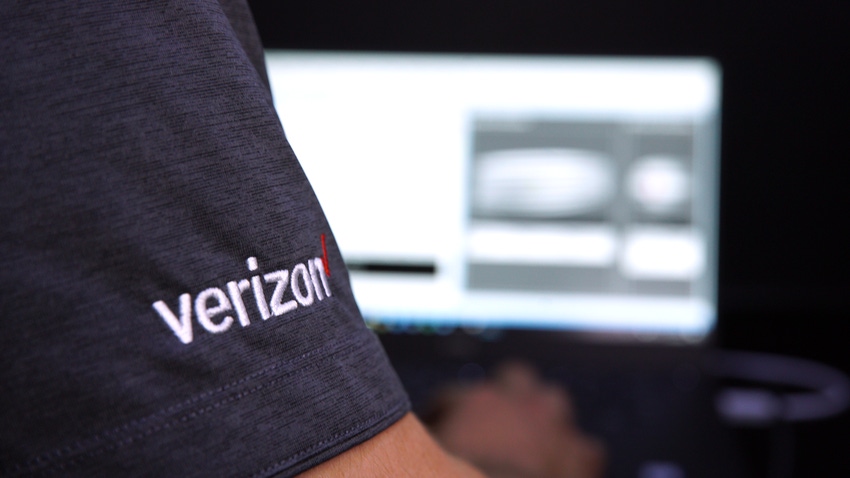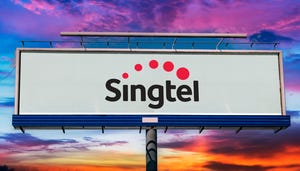Verizon surprises with ongoing delays in 5G standalone rollout
Verizon initially said it would launch standalone 5G in 2020. Some in the industry thought it did so in 2022. But the company said the technology 'is in testing now' and is still not available commercially.

Verizon said it does not yet have any commercial traffic traveling over its 5G standalone core, a situation that has surprised some industry analysts and seemingly runs counter to indications that it had already launched commercial standalone 5G services.
"We have it in trials only at this point. We don't have it commercially available for our customers," Verizon's chief networking executive, Joe Russo, said on a podcast last month hosted by Recon Analytics. "So more to come in the next several months as Verizon will be entering the standalone core game."
When questioned about Russo's comments, Verizon spokesperson Kevin King clarified that "we have commercial traffic running on our 5G non standalone core. That is what we announced earlier in the year. Joe was referring to our 5G standalone core which is in testing now."
Earlier this year Verizon issued a press release describing the benefits of 5G standalone (SA) technology and how it's "what sets Verizon apart." However, the release doesn't specifically say that Verizon launched the technology.
But last year Mobile World Live reported that Verizon was migrating "commercial traffic onto SA 5G core." The article cited an unnamed Verizon representative. Mobile World Live also reported that Ericsson, Casa Systems, Oracle and Nokia supply Verizon's 5G core.
Moreover, some top Verizon executives seemed to indicate as recently as September that Verizon was funneling commercial traffic onto its standalone 5G core.
"People talk about the standalone core. Just terminology-wise, that's the 5G core essentially. If you guys have read the stuff we've said publicly, certainly we serve some customers on portions of our 5G core," said Mike Haberman, Verizon's SVP of strategy and transformation, during a webinar for analysts on September 29, obtained by Light Reading. "And then we have some internal stuff going on with other functionality on the core. We're in the process of rolling out in a very smart fashion."
Reading between the lines
A number of analysts contacted by Light Reading, including Dell'Oro Group's Dave Bolan and Daryl Schoolar of Recon Analytics, were surprised to learn that Verizon does not have any commercial traffic traveling over its standalone 5G core. Dell'Oro Group, in January 2023, listed Verizon among the few North American wireless providers that had commercially launched the technology.
"This is a moving target," Recon Analytics analyst Roger Entner told Light Reading. But Entner said Verizon's position on the standalone version of 5G makes sense. "The benefits you can get today from standalone are limited."
Standalone 5G has proven difficult for a number of operators. "The reason it is taking quite a while to roll out the 5G [SA] core is that's a sea change in the underlying infrastructure," said one European network operator executive last year.
The situation is complicated by the nuances of 5G technology in general. For example, most early 5G networks launched on 4G cores. Several years after launching 5G services, Verizon last year announced it had begun moving traffic onto its new 5G core, which supports both the non standalone (NSA) and standalone (SA) versions of the technology. The SA version of 5G has sometimes been touted as the "real" 5G because it provides extensive support for technologies like network slicing.
Other factors complicating the issue: Shifting commercial traffic onto a new mobile core can happen in stages, either with small groups of customers or in select geographies. That can make it difficult to determine when a technology has been officially launched.
Finally, commercial standalone 5G services require not only a compatible core but also compatible devices among end users.
Regardless, Verizon now appears to be roughly three years behind its initial standalone 5G rollout plans. In the summer of 2020, Verizon said it would begin moving traffic onto its standalone 5G core "in the second half of 2020 with full commercialization in 2021."
Then, in early 2022, Verizon CTO Kyle Malady suggested that the operator would begin moving some of its fixed wireless access (FWA) traffic onto its standalone 5G core by June of that year. He also said at the time that Verizon would start putting smartphone traffic onto that core in 2023.
Russo replaced Malady as Verizon's networking chief following Malady's promotion to CEO of Verizon Business earlier this year.
First or best?
On the recent Recon Analytics podcast, Verizon's Russo offered some insights into the operator's standalone thinking: "It is absolutely a capability that we think will be another enabler to new use cases. But ... the reliability and performance of Verizon's network is what we stand for, and I don't put technology out into the network that is a step back. It has to be a step forward. And all of the data that I see – both internal testing and with external testing that happens out there in the market – tells me that SA [standalone] needs a little bit more time."
He continued: "We're doing significant developing and testing to make sure that both the data session and the voice sessions in a standalone world are as good or better than what you would expect in our 4G network today. So we see that in the next several months we're going to get there, but it was not my goal to be first in deploying standalone. It's my goal to be best in deploying standalone."
In his analyst webinar, Verizon's Haberman offered some additional comments on the topic: "Here's the deal: When you go to the standalone core, you can't aggregate your LTE carriers. With the non standalone core I'm aggregating together both 5G and 4G. So when you go standalone you start to bifurcate the spectrum. So that's the impact to the RAN [radio access network]. So you better be sure that your mobile [customer] distribution, where they are geography, makes sense. Or what will happen is those customers will experience a lower service level. No good. We want to be careful of that. So that's why, when you do the standalone core, you have to pay very close attention to your radio access network because they are directly attached."
For its part, T-Mobile launched the SA version of 5G in 2021, in part to improve the coverage of its lowband 600MHz 5G network. It has also touted the technology in its pursuit of the business market.
And AT&T's chief networking executive, Chris Sambar, said recently that the operator is moving some customers to standalone 5G. "Many of the newest mobile devices are ready for 5G standalone, and we continue to move thousands of customers every day," he wrote. "We also recently launched AT&T Internet Air home fixed wireless service, and from the start, this product rides on standalone 5G."
About the Author(s)
You May Also Like



.jpg?width=300&auto=webp&quality=80&disable=upscale)








